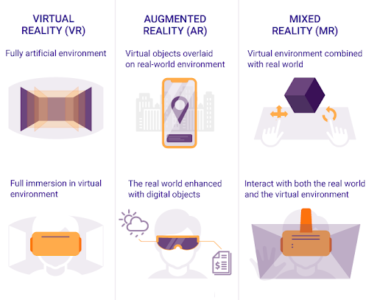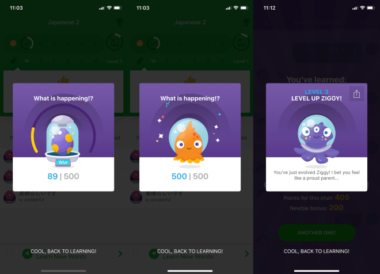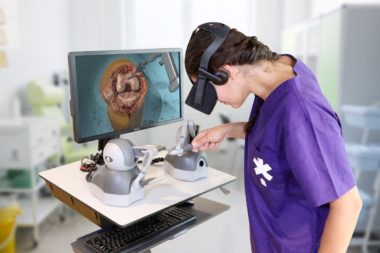Distance learning is something a lot of people have been pushed into due to the coronavirus pandemic. But online learning from home shouldn’t be something people dread.
Virtual reality (VR) headsets can immerse an individual into a whole new digitally created world, and augmented reality (AR) technology can superimpose digitally created items into the real world via a smartphone camera.
You might be thinking, “Where’s the link to distance learning?”
VR/AR has the ability to elevate distance learning way beyond the realms of a laggy-connection prerecorded video tutorial. Whether you’re a biology teacher who wants to teach kids anatomy, or a business owner who wants company employees to improve digital customer engagement development skills, VR/AR can enhance this experience.
In this article, we have compiled the top five ways VR and AR can be effectively used in distance learning.
1. Classroom Gaming
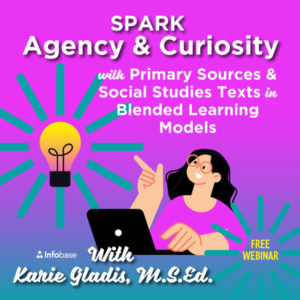 Even though a virtual classroom full of students playing games sounds like the start of any online lecturer’s nightmare, game-based learning can actually be very useful. The education gamification market will reach around $1.5 billion by the end of this year. Research shows that students who have used gamification have scored 14% higher in skills-based assessments.
Even though a virtual classroom full of students playing games sounds like the start of any online lecturer’s nightmare, game-based learning can actually be very useful. The education gamification market will reach around $1.5 billion by the end of this year. Research shows that students who have used gamification have scored 14% higher in skills-based assessments.
Essentially, game-based learning is where students complete a series of tasks centered around one theme or subject, and the better they fare, the more rewards they receive. The more rewards they achieve, the more they progress through the levels. You know how games work.
This is effective since it takes the perceived side effects of gaming, such as addiction and over-competitiveness, and uses them for learning purposes. VR allows students to immerse themselves in a game that is engaging but also educational, and it promotes team building and healthy competition.
VR gamification has the ability to enhance distance learning as it can create genuine social interaction, and, due to its versatility, it can engage students far more than other forms of distance learning. On average, only 15% of students make it to the end of their online course.
Research on game-based learning shows that:
- 80% of U.S. workers believe that game-based learning is more engaging.
- Using game-based learning improves 50% of workers’ productivity.
- 67% of students claimed that they feel more motivated during gamification courses.
Not only that, it enables students to take ownership and control the management of their learning, as it is up to them to follow the game’s narrative and collect the badges. It also lets them explore various subjects and roles through different avatars and identities.
One of the most useful aspects of VR game-based learning is receiving the analytics. These games have the ability to quickly and accurately assess students’ strengths and weaknesses and suggest areas that they can improve in. This room for constant progression encourages students to think critically, which is a skill that is sometimes lost during distance learning.
2. Virtual Exploration
Whether you’re a cloud-based call center owner providing distance learning for your employees or a university lecturer, VR/AR exploration is a great way to grab any student’s attention. Research that explored students’ attitudes toward virtual events or trips showed that 80% of the students rated the experience very highly.
Of course, a VR version of the Great Pyramids isn’t a substitute for the real thing. But, with the current pandemic and international travel being at a halt, VR field trips are a great alternative. A VR headset gives students access to anything from the ice caps to amazing historic ruins.
Students don’t even need a VR headset. With AR field trips, they can use their phones to place AR items, such as a World War II bunker, in the middle of their living rooms and explore it from various angles.
Virtual field trips are also more accessible than physical trips. This is because they cost far less, which means more students can participate regardless of their socioeconomic background. This can be particularly important when fieldwork is a requirement for academic success, for example, in geoscience courses.
Also, virtual field trips do not require as many staff and chaperones as a physical trip. This is because there are far fewer safety risks, potential hazards, and insurance costs. So, there is no limit on the number of students that can attend. This is also useful for trips that normally would require students to visit at a specific time of the year due to weather conditions.
Most importantly, virtual field trips enable students to make mistakes without fear of consequence, which is the essence of a healthy learning environment.
With the right strategies, you can create an effective and productive learning environment, even remotely. Check out this infographic to learn more.
3. Practical Tasks
One of the biggest downsides to distance learning is the lack of a practical element. VR and AR have the ability to bridge the gap between distance and real-life learning; they can merge theory and practice. Virtual practice can increase a student’s quality of learning and retention by up to 90%.
Distance learning can also bring with it constant distractions, especially if it is being carried out at home without an optimized work-from-home setup. Video tutorials can sometimes be useful, but when a student uses a virtual headset combined with headphones, they will completely immerse themselves in the practical task at hand. This provides them with a better learning environment.
This can be incredibly useful, whether you’re a teacher wanting to demonstrate a chemistry experiment, or a computer science student wanting to learn data quality software development. Pair-programming is also a great concept that allows the teacher to share your virtual screen and guide you through the process.
VR/AR distance learning does not only act as a replacement for real-life learning, but it can actually enhance it. VR can improve any learning that involves design such as architecture. Students can wear a VR headset and view the models and drawings they have created in a virtual world. If the student has designed a hotel, they can go inside, walk around, and make adjustments to the building that will improve the potential customer experience.
4. Overcoming Language Barriers
Almost everyone has been in a situation where they’ve had to communicate with someone who doesn’t speak their language at all or very well. This can often happen in call centers that don’t implement skills-based routing and the agent that you speak to can’t comprehend your request.
Learning in a second language is a challenge for anyone’s brain. Not only do you have to constantly transfer between your mother tongue and the new language, you actually have to retain information that you never knew before. This is pretty common in the U.S. Data shows that 15% of adults speak a language that isn’t English at home.
Virtual reality has the capability of providing a seamless education for people learning in a second language. This technology can instantly translate or immediately subtitle the lecturer, enabling these students to learn and understand at a faster rate.
Not only will it help international students during the online course, but it can help them outside of that as well. The coronavirus pandemic has prevented a lot of social interactions that would usually help international students to further develop their second language. VR language courses can allow students to replicate these interactions from the safety of their own homes.
Another important aspect of VR/AR is collaboration. International students can often hesitate to speak in fear of mispronouncing or making grammatical errors. VR interactions can help to minimize this and encourage more students from all backgrounds to socialize.
5. Special Learning
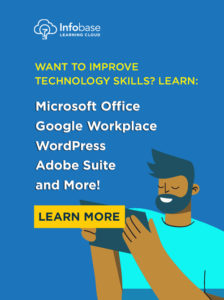 VR has the potential to improve the education and lives of students with learning disabilities. A key feature of the virtual world is the ability to control any external stimuli such as audio or visual. This means that students with any sensory disorders can slowly be introduced to these triggers, which means they will be able to have a full and safe experience.
VR has the potential to improve the education and lives of students with learning disabilities. A key feature of the virtual world is the ability to control any external stimuli such as audio or visual. This means that students with any sensory disorders can slowly be introduced to these triggers, which means they will be able to have a full and safe experience.
VR has incredible versatility, as mentioned above, so each virtual distance learning experience can be tailored to the specific condition of the student. For example, students who are blind can have a more acoustic learning experience, and they can even navigate themselves through the virtual world using audio cues.
VR can also assist students with learning disabilities in a learning environment by translating their gestures into speech. This allows various students to communicate with one another and can greatly improve their social skills. Not only that, VR can provide anonymity to students with learning disabilities if required. VR avatars can also enable students to express themselves beyond the boundaries of their disability.
VR is not only useful for teaching students, but it can also help carers and even parents to better understand certain conditions.
With 97% of students wanting to learn using some form of VR/AR, it is clear that this technology is the present and the future. Statistics show that 80% of teachers have access to VR devices, but only around 7% actually use them with the rest opting for other online teaching tools.
Understanding this technology, making it relevant to the educational materials, and taking advantage of its benefits is vital for the improvement of distance learning. VR has the ability to bring a positive form of gaming into the virtual classroom that can help with team building and track progression.
Virtual trips and practical tasks can elevate distance learning and allow the student to immerse themselves fully and develop skills and knowledge for the “real world.” And finally, VR can help minimize language and disability barriers.



